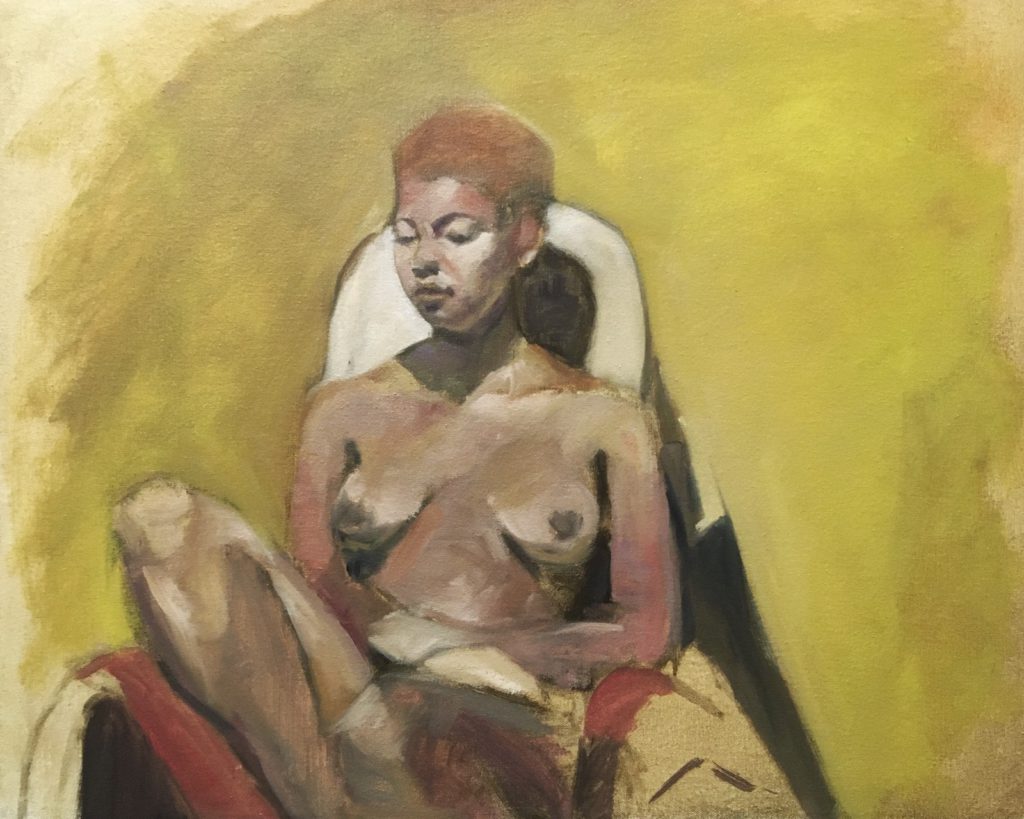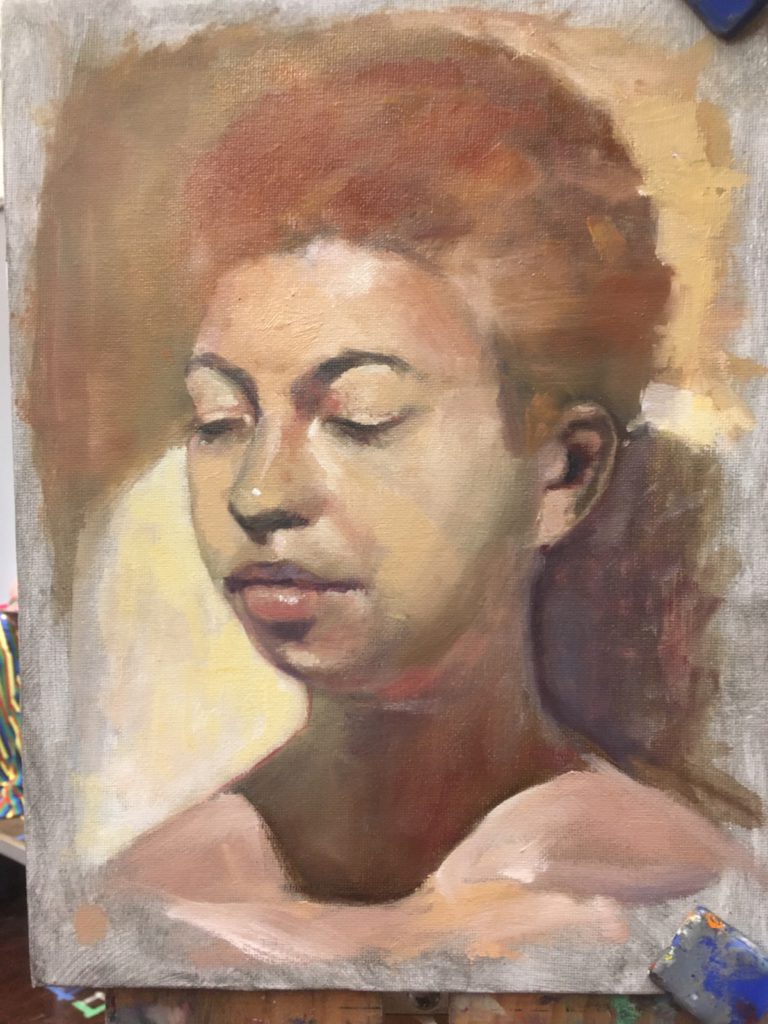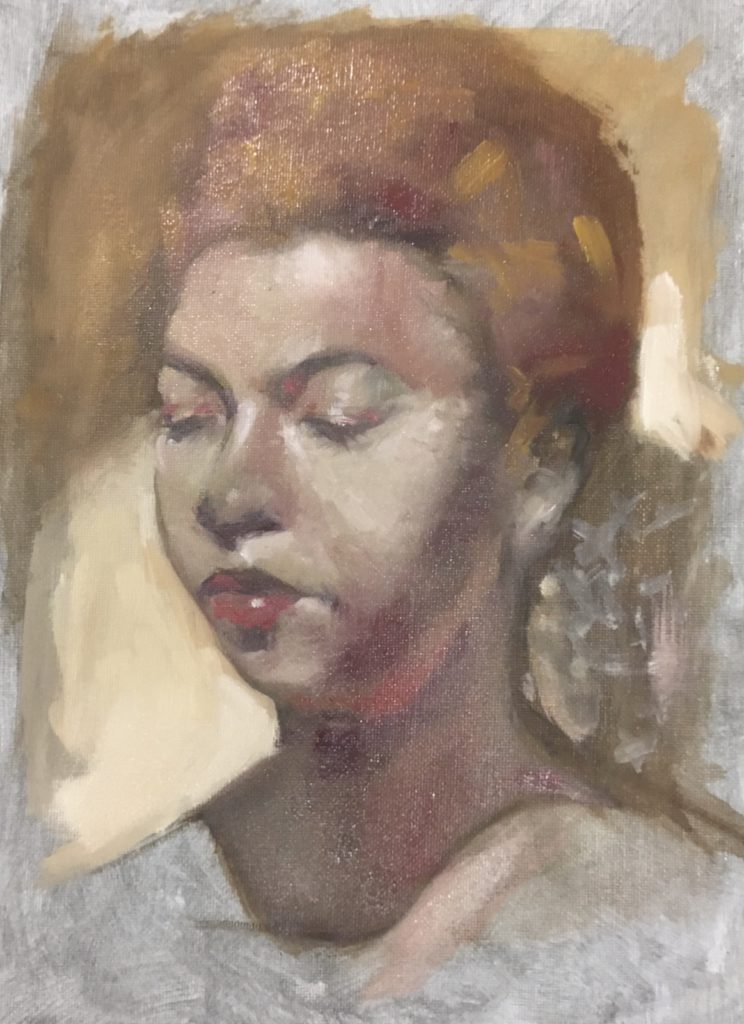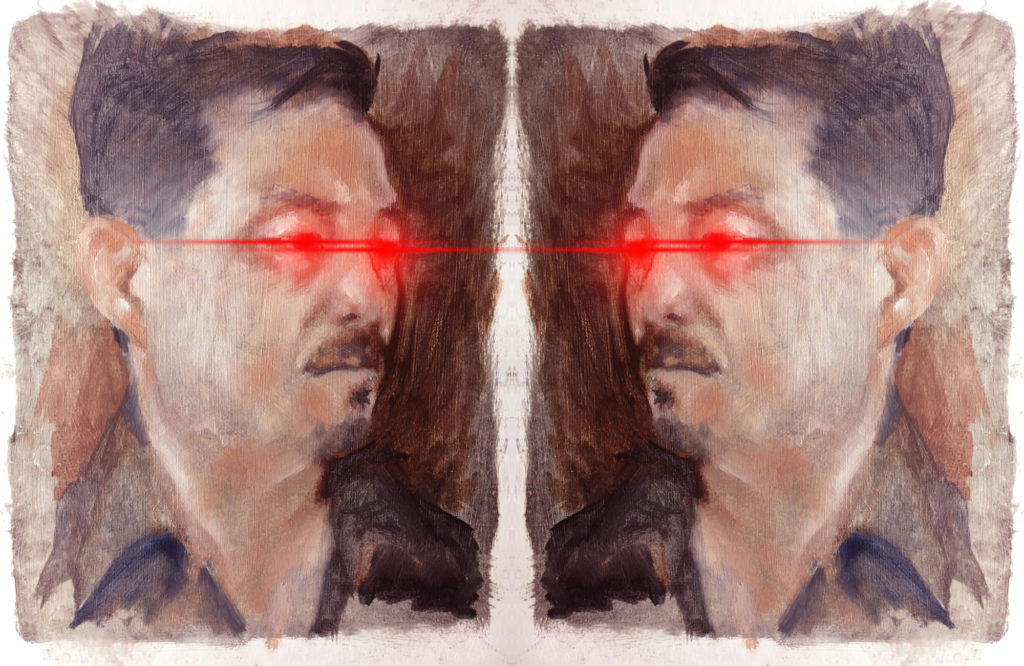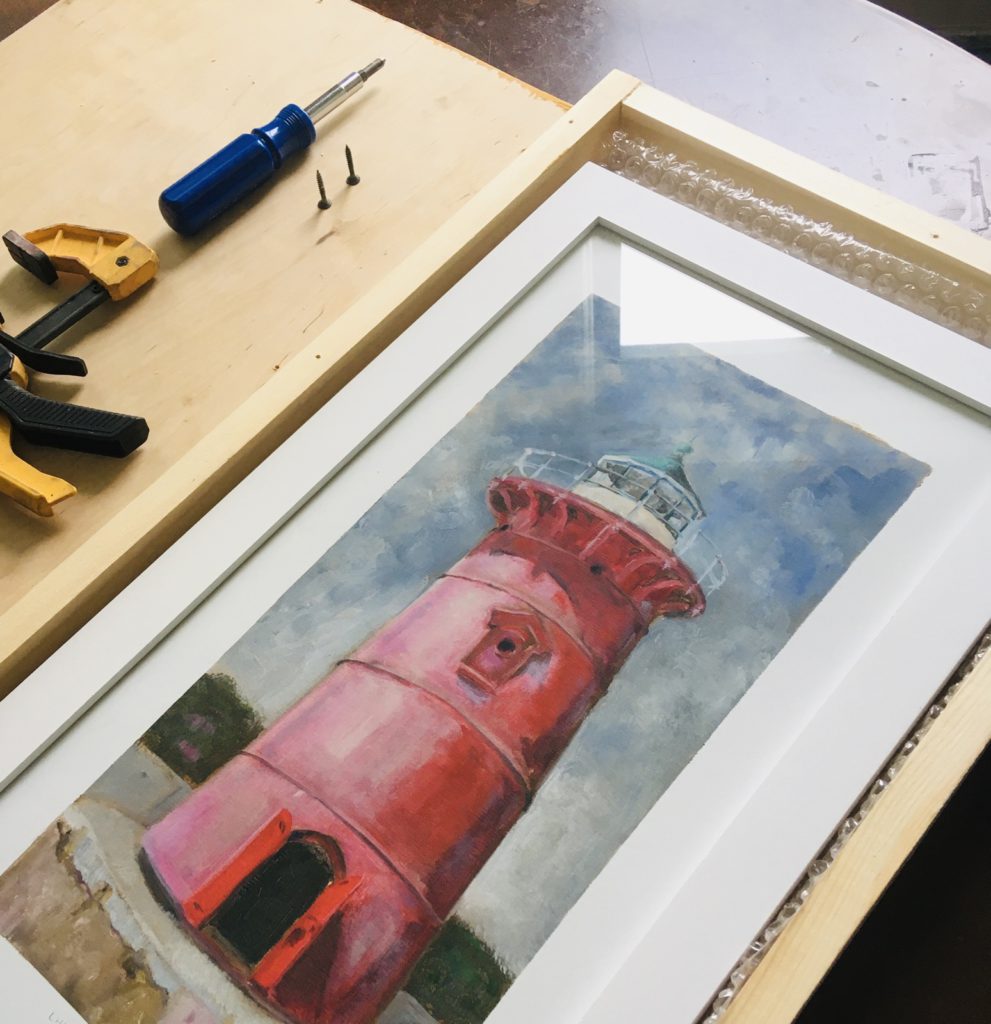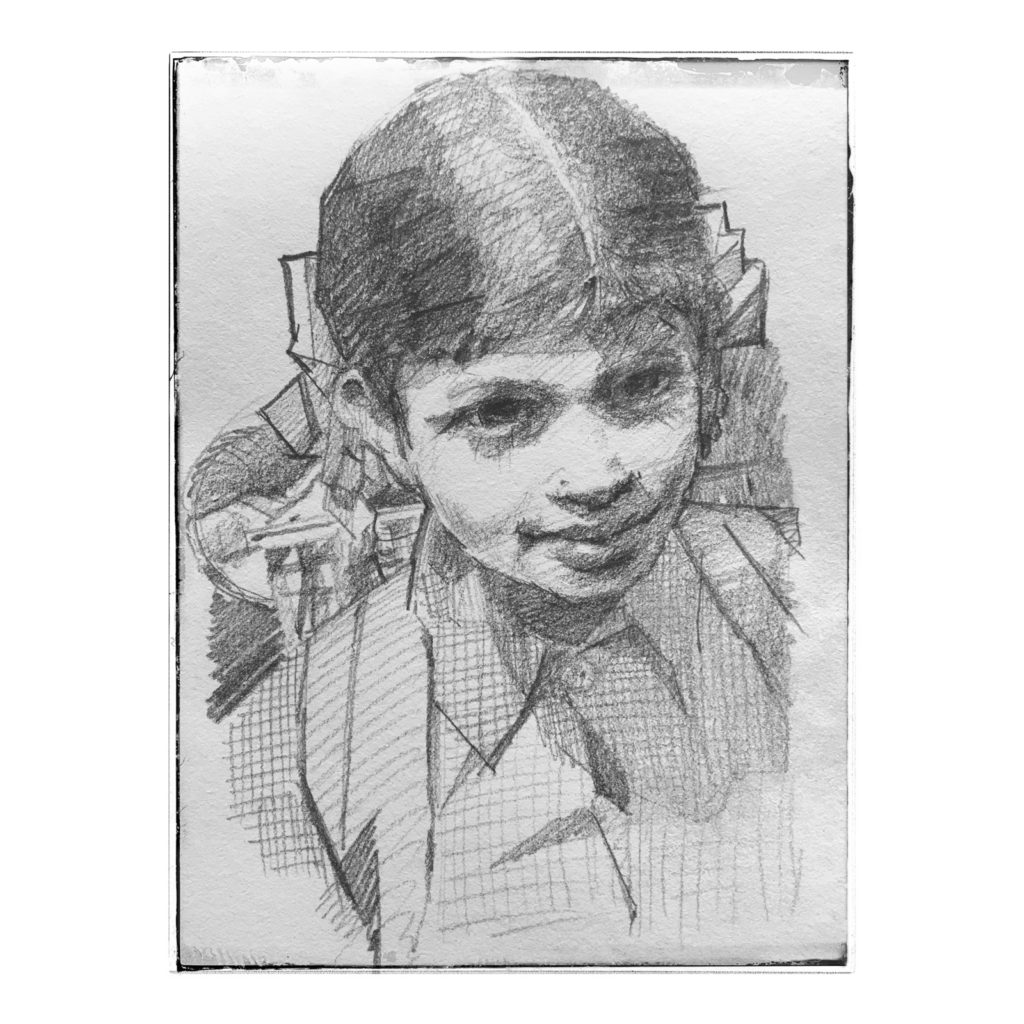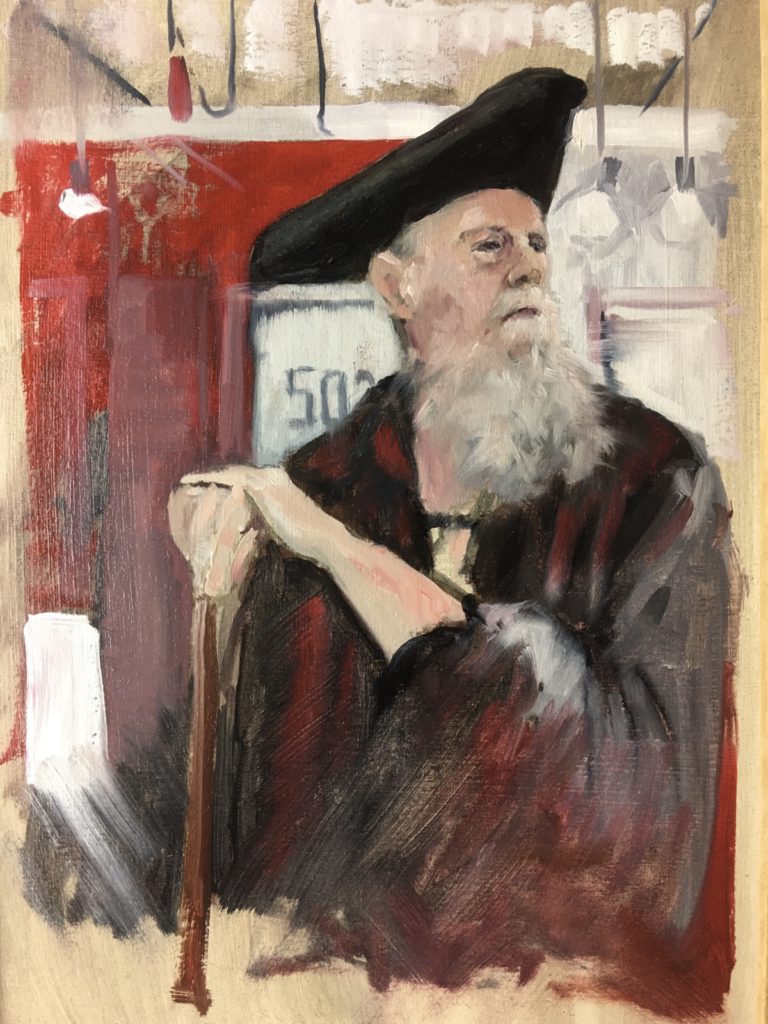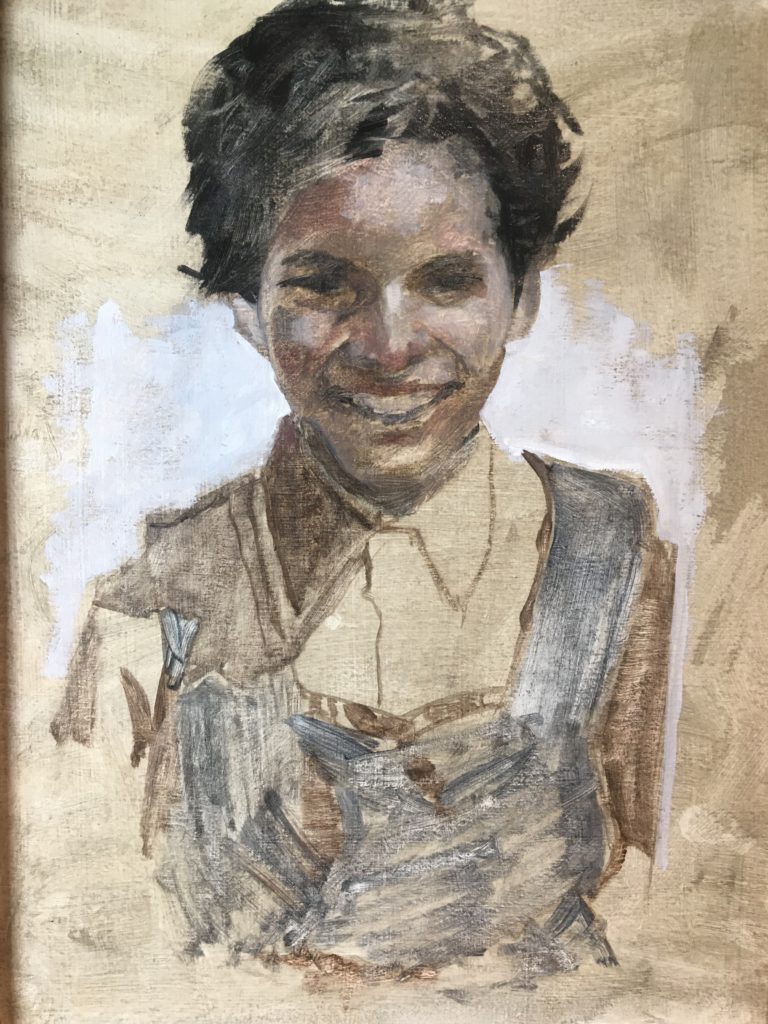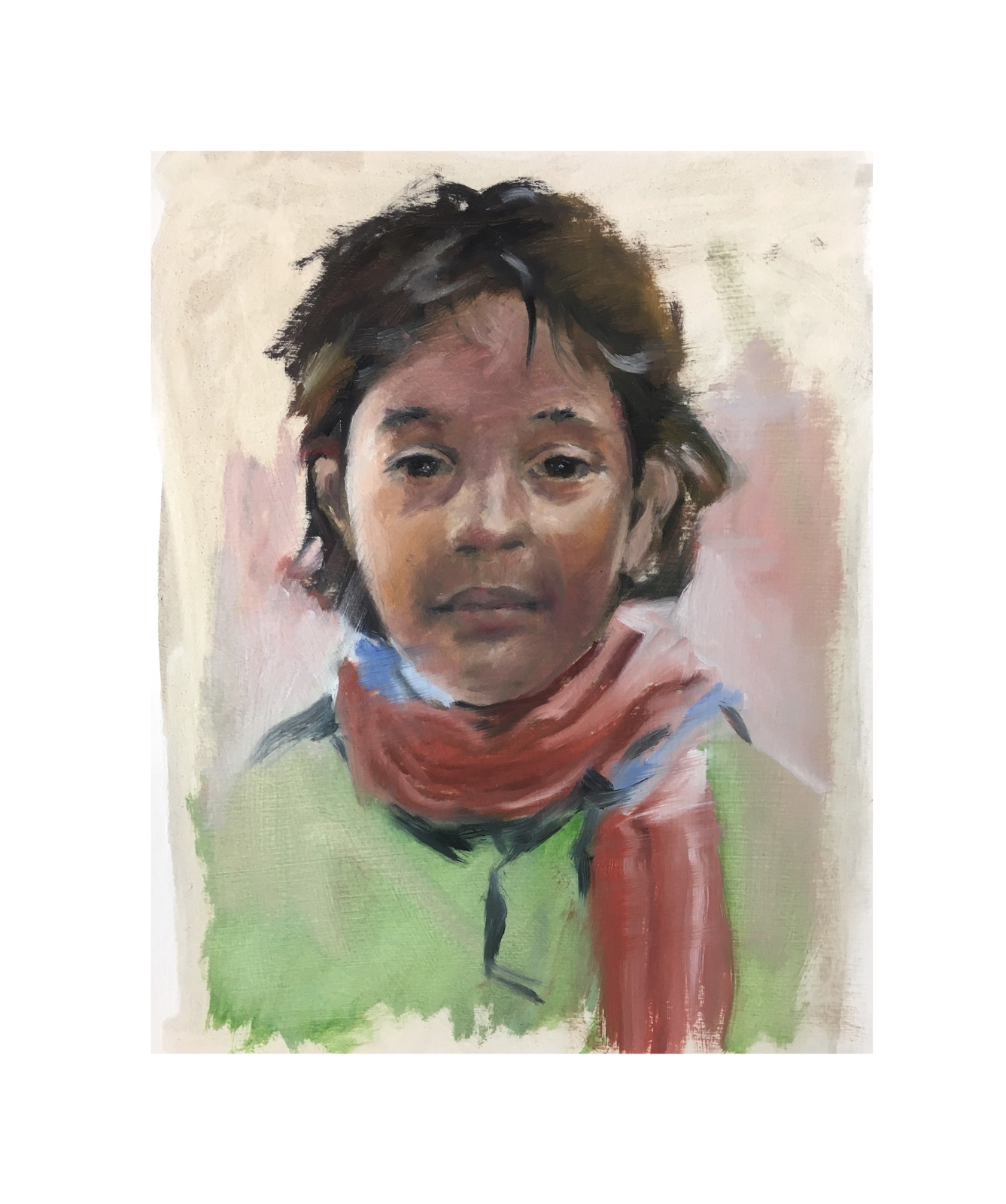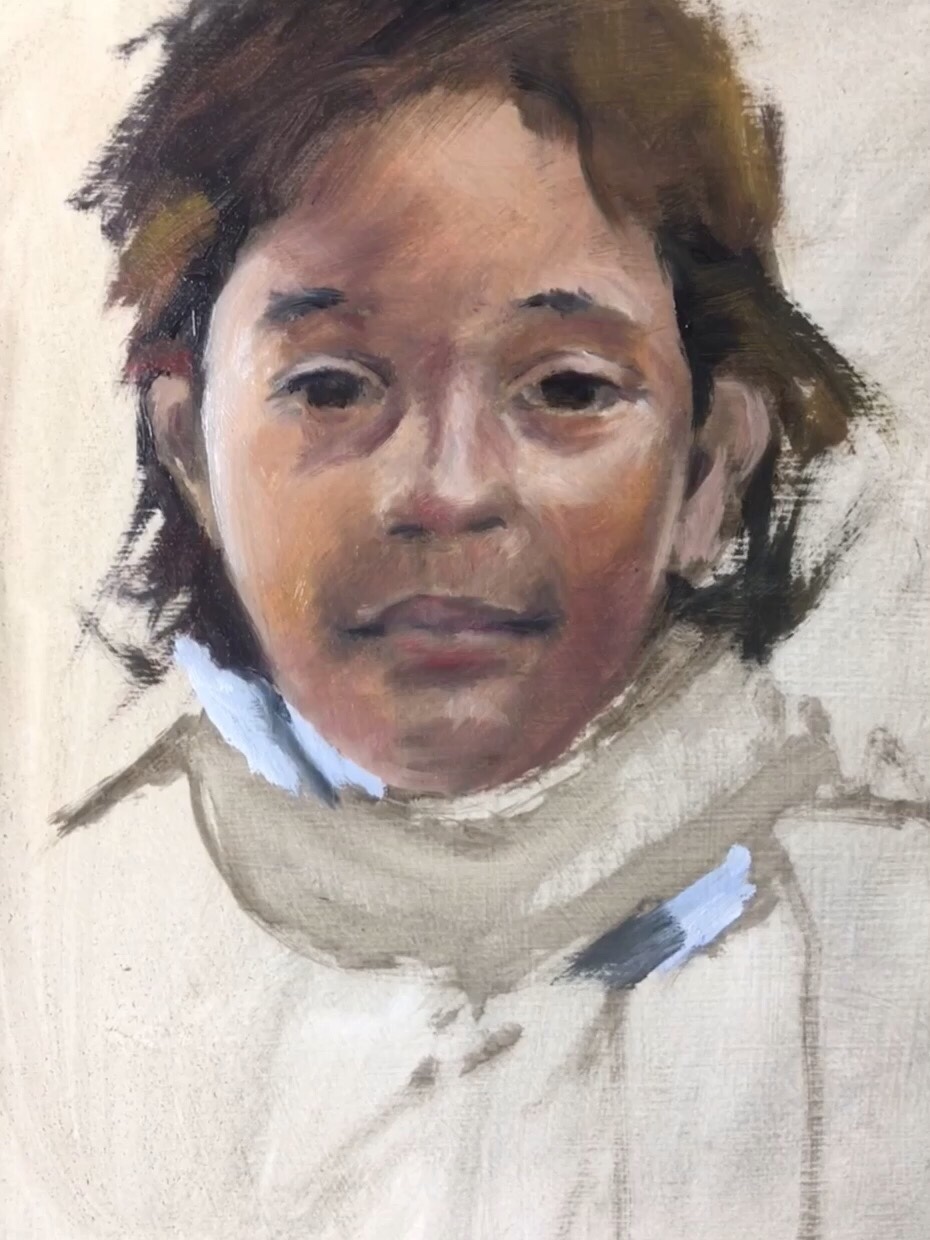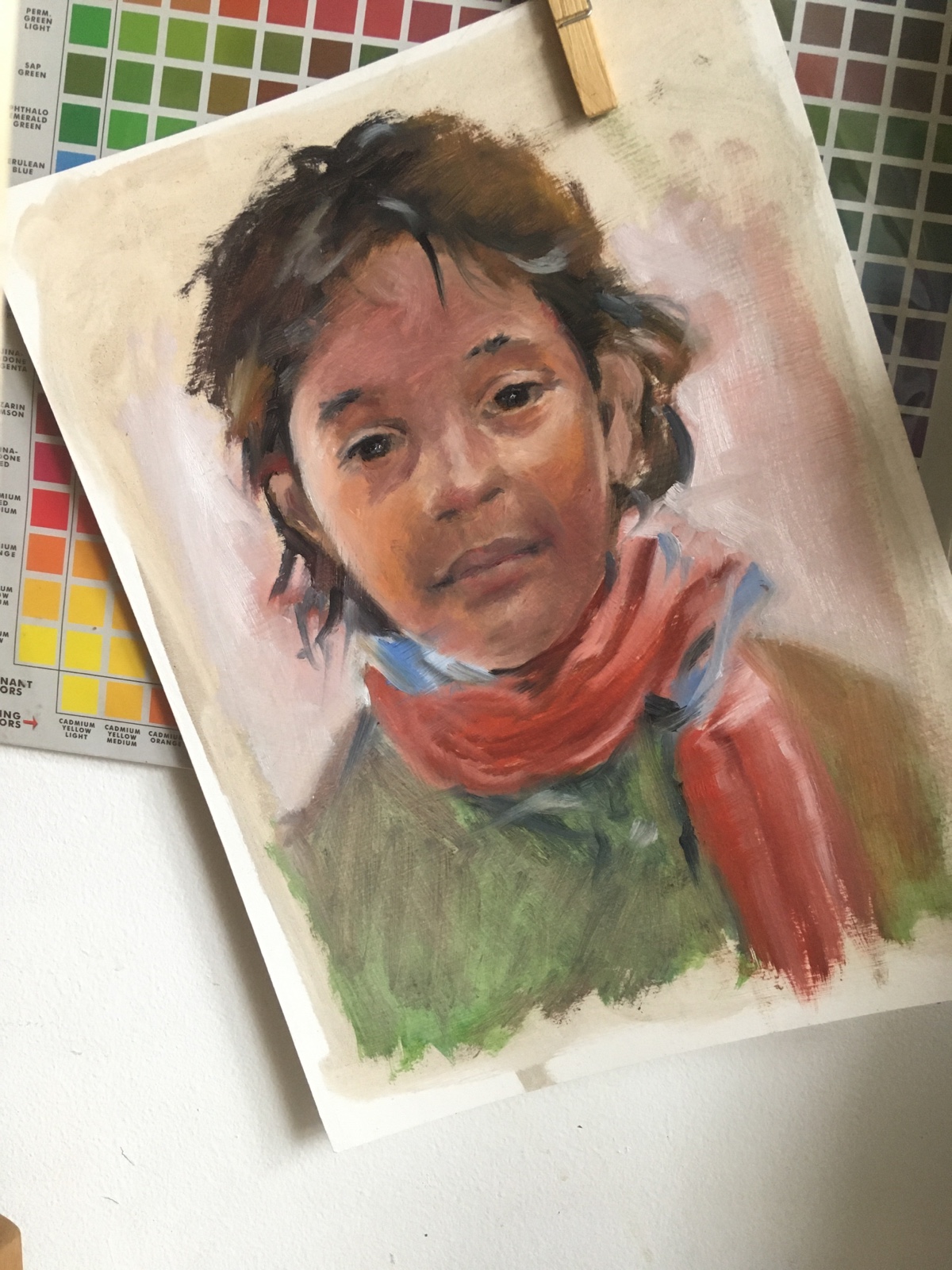To me this painting sums up a bizarre chapter that we have lived through since our lives have been disrupted by Coronavirus–this is my first painting from a long pose that lasted 3 weeks. I have done smaller paintings from shorter poses in the recent weeks, but they were color studies.
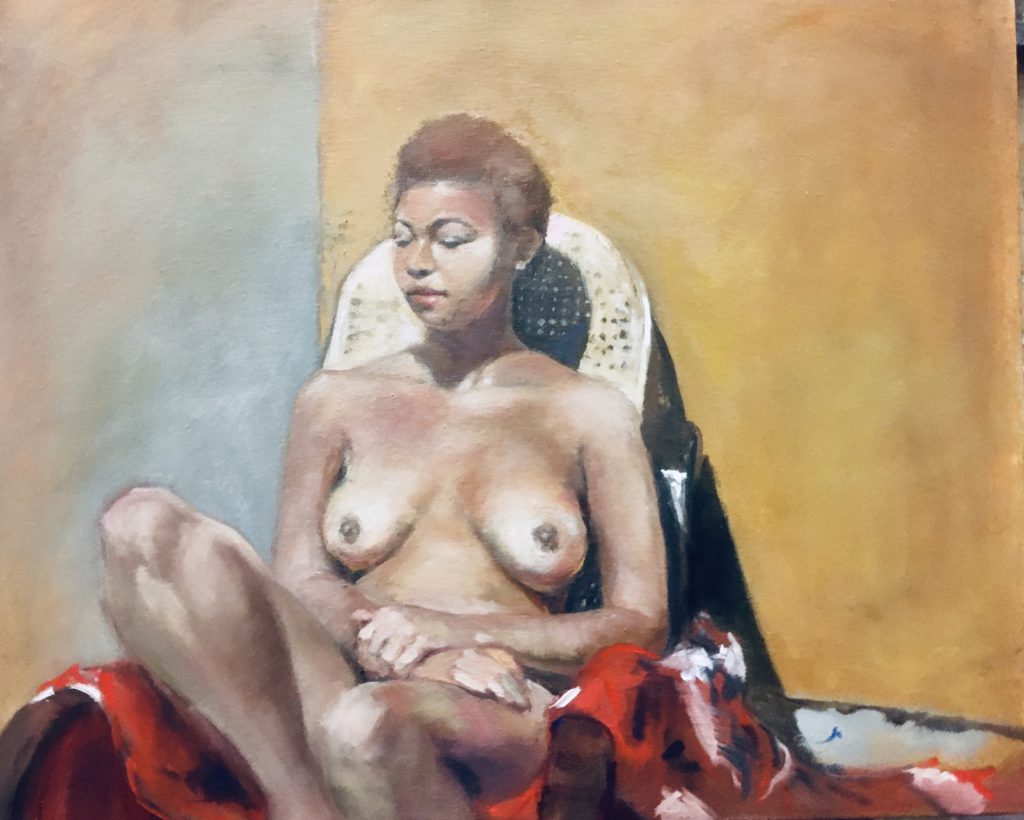
It has been a pretty intense three weeks. There is never a dull moment these days. Everyday, I worried that the painting sessions would be interrupted by another surge of Covid-19. I suppose, every painting is influenced by internal and external factors, but it’s pretty terrible when a project comes to an unexpected halt.
While filled with what seems to be all around bad news around the world, there we were, in a studio full of ~20 fully vaccinated artists and 2 models, painting away. For 3.5 hour stretch of daily painting session, my attention simplified by shutting down the distractions and by focusing on basic necessities: lighting, heaters for our model, colors, and accuracy of my drawing.
All has gone safely thus far after 3 weeks of painting at the Art Students League of New York. I am grateful that the League has reopened and that I am able to continue my search, whatever that maybe. Thank you.
The long pause has forced me to reassess and adjust my plans so I can continue to paint. The change of plan was absolutely necessary.
What’s Happening?
- The Delta Variant of Covid-19: The confirmed cases and death have been going up in many parts of the U.S.
- Cryptocurrency: China has been cracking down on cryptocurrency. In their latest move, it stated that all cryptocurrency transactions are illegal.
- The Debt Limit: Unprecedented spending by the U.S. government will likely require increasing the debt limit.
